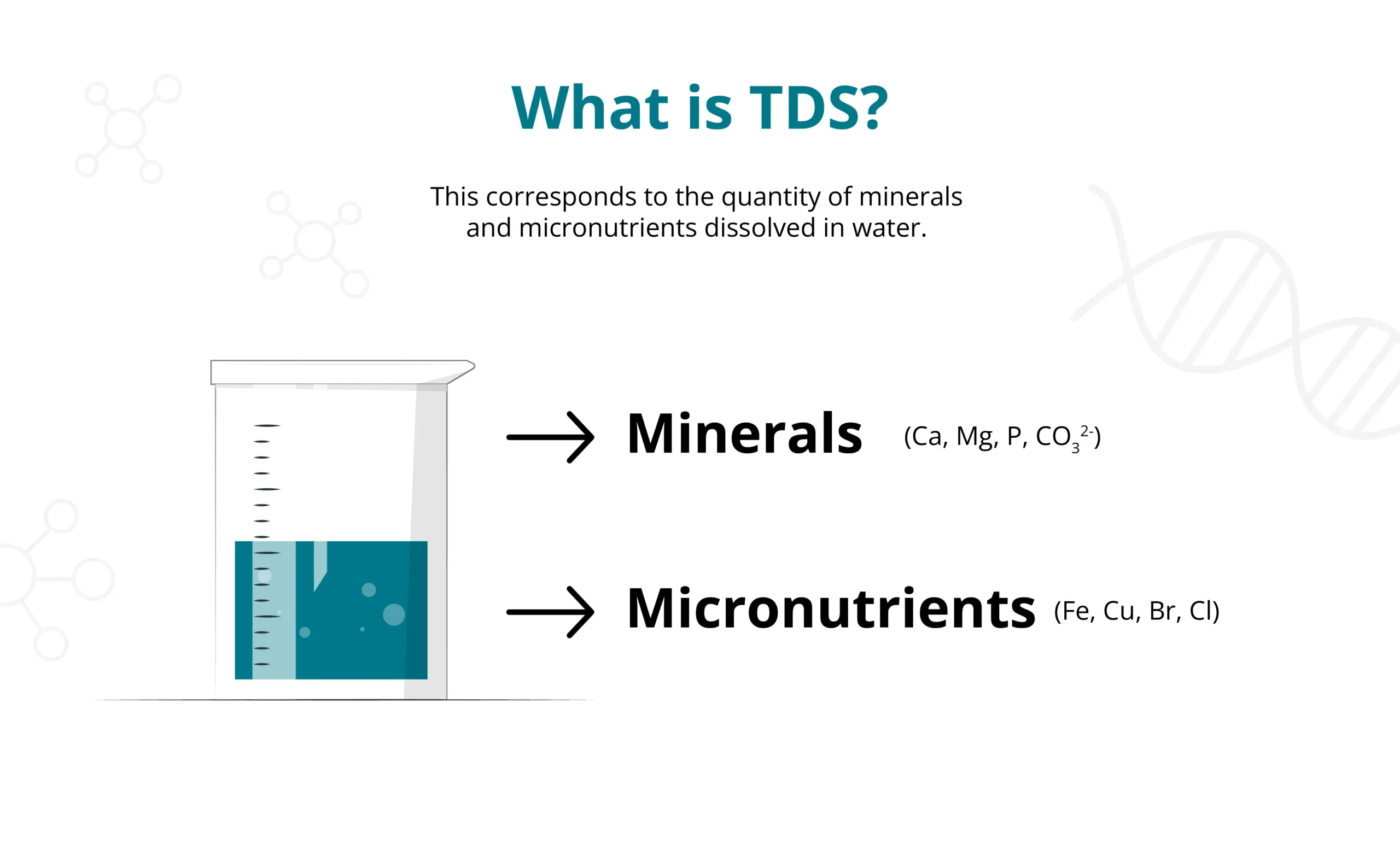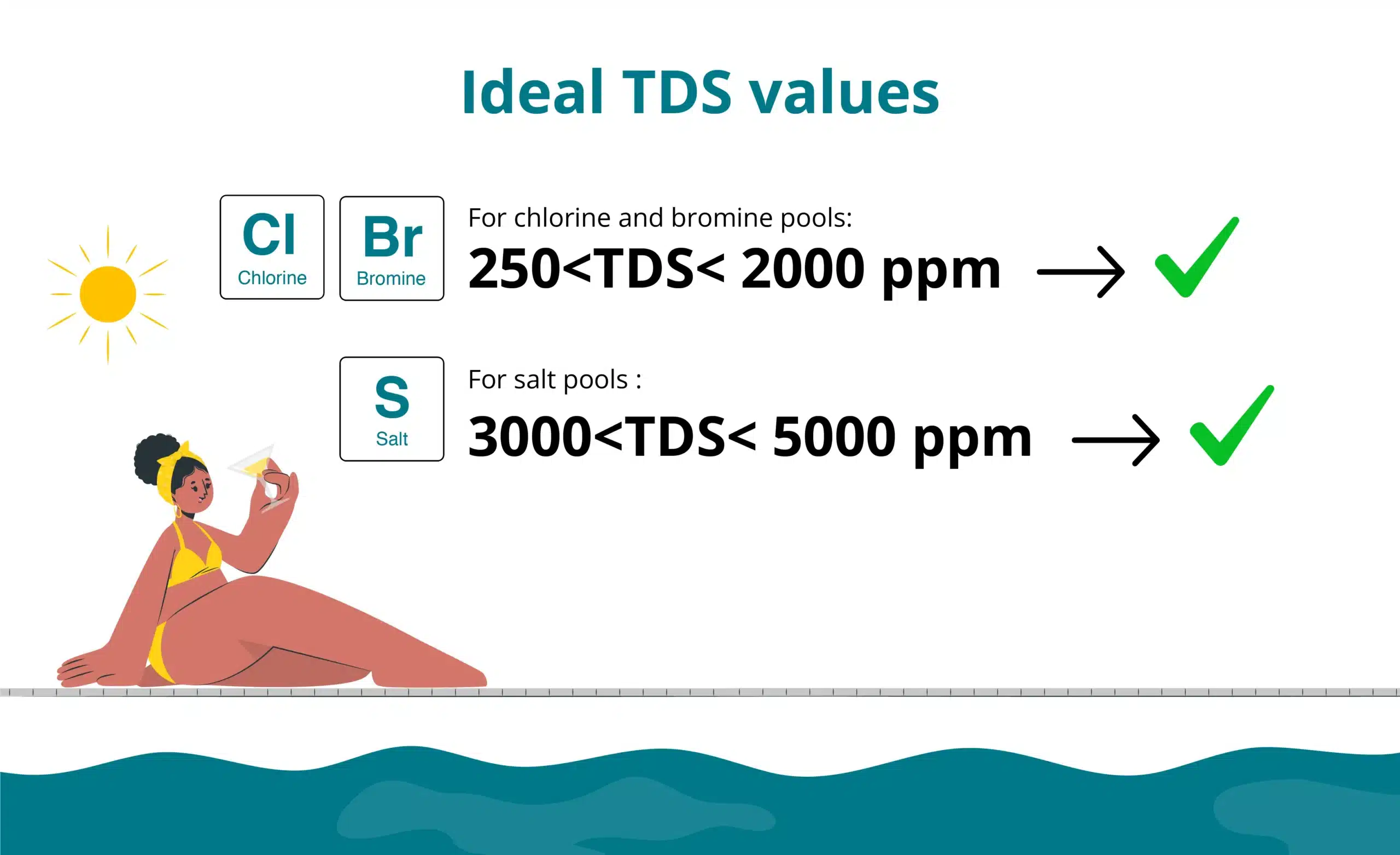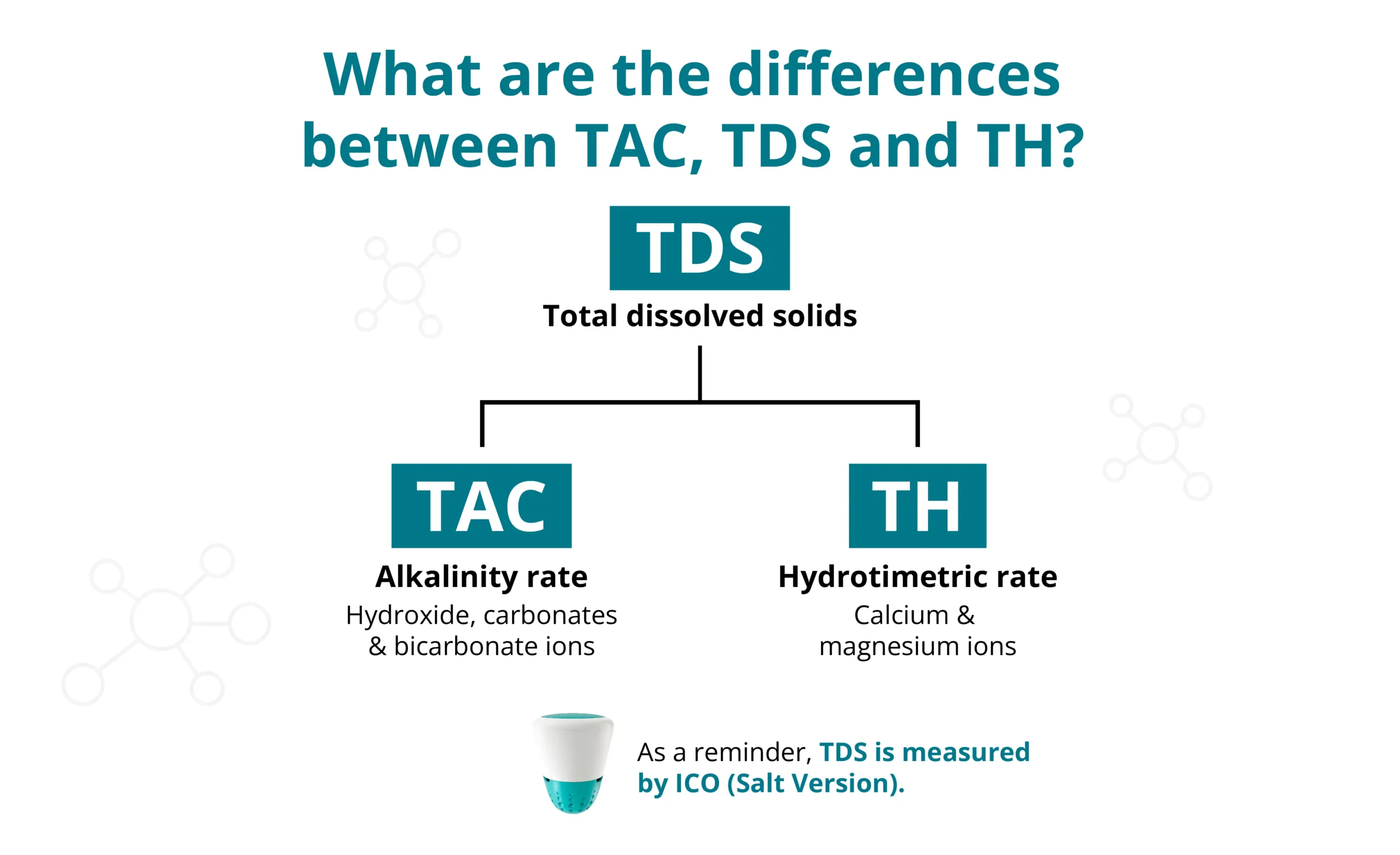What is TDS? Why is it important to measure it in salt-treated pools? TDS is often overlooked by pool owners. Yet it's a key indicator of the quality of your pool water, as it shows its salt content and purity. Our chemistry expert explains everything you need to know about TDS to help you treat your pool water more effectively.

TDS signifie « total des solides dissous » dans l’eau. Il détermine la concentration des minéraux (calcium, magnésium, sodium…), oligo-éléments (fer, brome, cuivre, …), résidus de produits chimiques (crèmes solaires, produits capillaires ….). Aussi appelé conductivité ou salinité, le TDS se mesure en ppm.

If the TDS is too high or too low, equipment will deteriorate. TDS also has a major influence on the effectiveness of disinfectant products: the higher it is, the less effective the treatment products will be.
To sum up, measuring and managing water TDS in salt-treated pools is essential for maintaining water quality, guaranteeing the effectiveness of disinfection systems, and ensuring the safety and comfort of bathers.

The mere presence of bathers in the water is a factor in the upward variation of TDS. Residues of chemical products such as hair care products and sunscreens dissolve in the water over time, adversely affecting water quality. Garden and terrace maintenance products can also inadvertently find their way into the pool, altering the TDS. It's important to note that water evaporation can lead to an increased concentration of organic matter in the water, accelerating the deterioration of water quality.
There are different ways of measuring TDS.
For connected water analyzers equipped with a TDS sensor, such as ICO Pool salt , TDS, ORP and pH are measured automatically every hour. These solutions are the easiest to use, as the sensors are calibrated and take measurements of all important water parameters, with the added benefit of treatment recommendations when values are out of range.
There are other ways of checking TDS, called salt testers (TDS sensor) or conductivity meters. These instruments are less expensive, but require the purchase of more measuring instruments or chemical strips for each of the water parameters: pH, TAC, TH, etc...
For pools equipped with a salt water chlorinator, it's important to know the TDS level, as it indicates the salt concentration in the water. In addition, the value obtained measures the performance of your chlorinator in converting salt into chlorine. When salt levels (and therefore TDS) are too low, chlorine's disinfectant action diminishes. If, on the contrary, there's too much salt, your equipment, including your chlorinator, risks premature corrosion.
A TDS level that is too high can lead to several problems:
For the chlorination system, high TDS levels can make it more difficult to convert salt into active chlorine. This compromises water disinfection and encourages the growth of algae and bacteria.
High TDS levels can accelerate corrosion of pool equipment such as pumps, filters and heat exchangers. This can lead to costly repairs and shortened equipment life.
A high concentration of minerals in the water can make pool water uncomfortable for swimmers, causing a sensation of dry skin or dull hair.
The TDS in water contributes to its electrical conductivity. When the TDS level is too low, the electrical conductivity of the water decreases, which can affect the salt chlorination system's ability to generate active chlorine. This can lead to inefficient water disinfection and promote the growth of algae and bacteria.
While high TDS levels lead to corrosion of equipment, low levels are also problematic. Water with very low TDS can corrode metal components to the point of leakage. This applies to pumps, filters and heat exchangers.
To avoid these problems, it's important to maintain the TDS at an appropriate level by adding minerals and salts. To do this, read your chlorinator manufacturer's recommendations and regularly monitor water quality.
If the TDS is too high (< 5,000 ppm or 3 to 5g/l), there is unfortunately no chemical solution to change its value. The only way to correct your pond's TDS is to renew the water. The higher the value, the greater the quantity of water you'll need to change. However, if your TDS is slightly above the norm, you can take action by lowering the water temperature:
However, if your TDS is slightly above the norm, you can take action by lowering the water temperature:
On the contrary, to increase the TDS, you need to create the right conditions to raise the water temperature. For example, by covering your pool.
Here are a some key points to understand these three values which are related but often confused:

For salt-treated pools, TDS is an important value for measuring the quality of your pool water. It also enables you to determine the salt level and control the operation of your chlorinator. An optimum TDS protects both your equipment and your health.